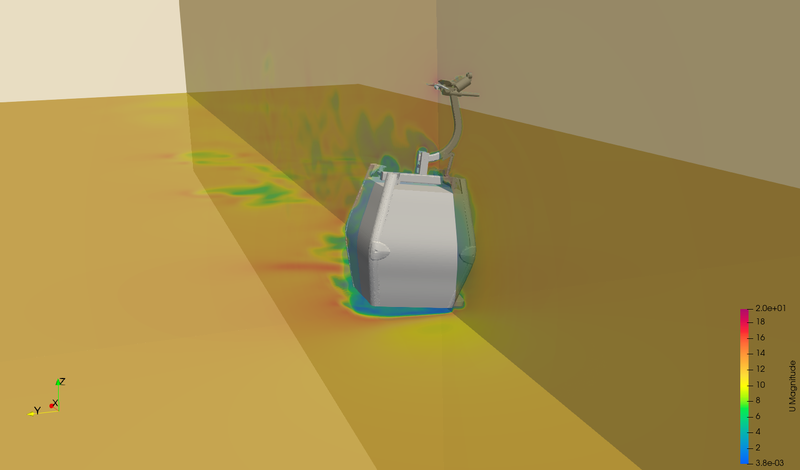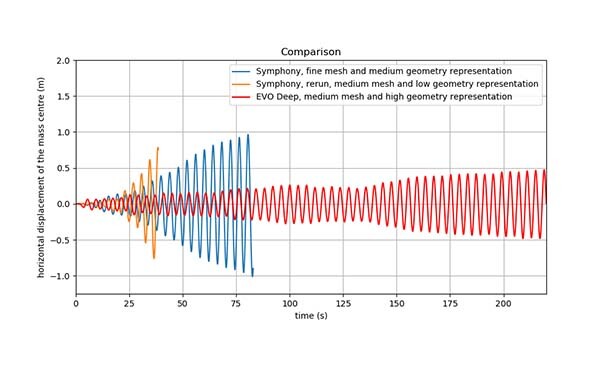Aeroelastic Cable Car Cabins
Computer-Aided Analysis of the Aeroelastic Behavior of Cable Car Cabins Considering Vortex-Induced Lateral Vibrations and Galloping Effects
This study is dedicated to the computer-aided analysis of the aeroelastic behavior of cable car cabins, particularly in the context of vortex-induced lateral vibrations and galloping effects. The main objective of this project is to apply numerical computational fluid dynamics (CFD) and computational structural dynamics (CSD) techniques, along with the development of algorithms for the effective coupling of these two areas. To achieve these goals, simulation programs such as OpenFOAM and Cratos were utilized. Using these programs, maximum displacements of the cable car cabins were determined under various configurations, wind speeds, and wind directions. The numerical fluid flow simulations allowed for a detailed examination of the aerodynamic forces, while structural simulations quantified the mechanical responses of the cabins to these forces. The conducted analyses revealed significant displacements of the cable car cabins under certain environmental conditions. Based on these results, targeted measures to reduce the displacements were developed. With the help of this study, it was possible to derive practical measures to improve the stability and safety of cable car systems under various environmental conditions.



